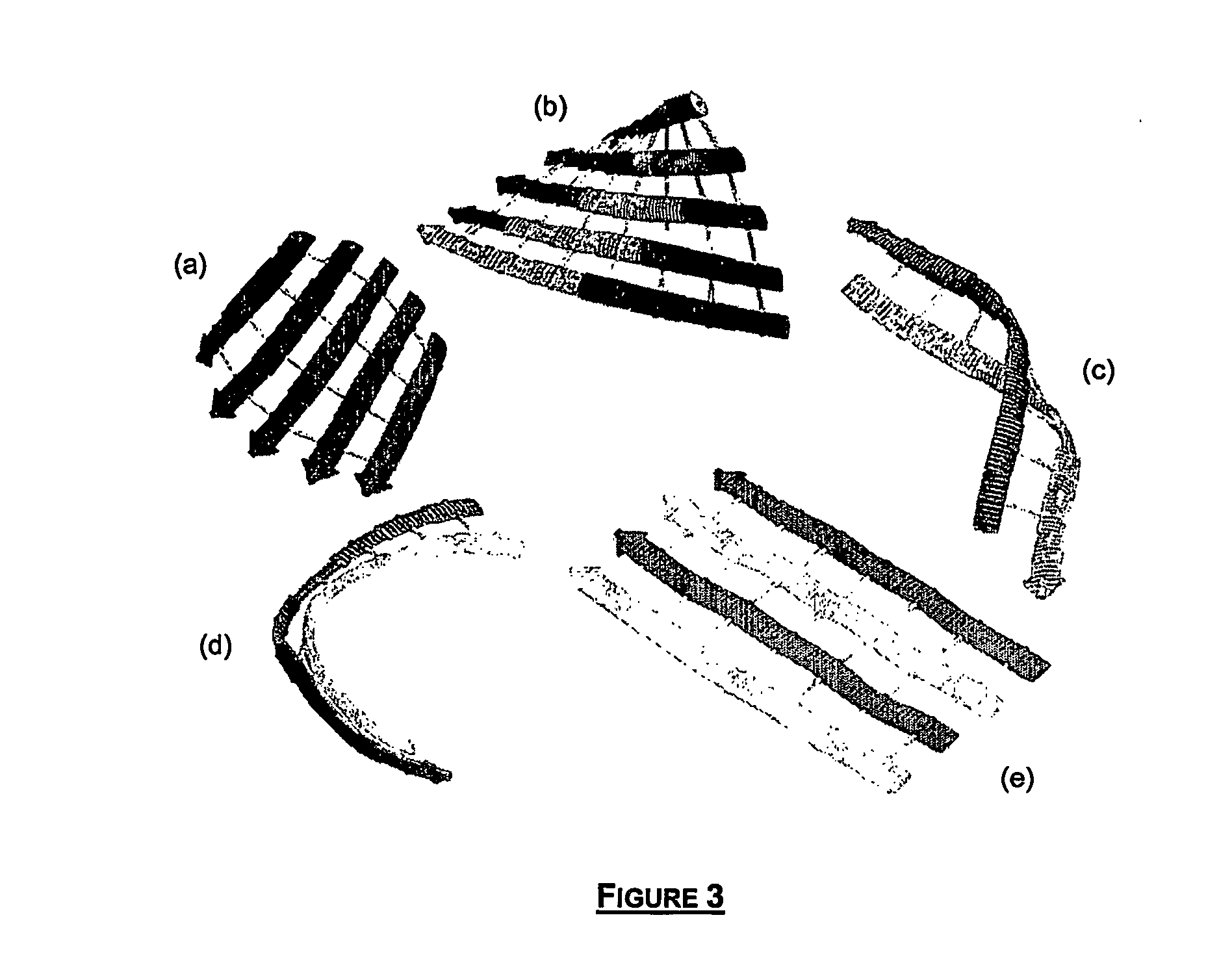Three dimensional model for protein or part of protein structure
a three-dimensional model and protein technology, applied in the field of modules, can solve the problems of difficult understanding, limited number of found with a significant frequency in nature, and complex structur
- Summary
- Abstract
- Description
- Claims
- Application Information
AI Technical Summary
Problems solved by technology
Method used
Image
Examples
example 1
α-Helices, β-Strands and their Common Distortions
[0097] This example shows that, by joining the basic components as described above, it is possible to form basic structures representing elements of secondary structure. Linear β-strands and α-helices, as shown by FIG. 2a and FIG. 2b, are formed by means of simply joining the relevant parts. A twisted β-strand may be produced by slight rotation of the consecutive units of the β-strand (FIG. 2c). So as to correctly represent the right-handed chirality of a β-strand (as measured considering every second residue), the parts should be turned clockwise as one moves further from the observer along the axis of the helix. A coiled twisted β-strand (FIG. 2d) can be initially produced by closing the strand into a circle so as to induce an arch, then releasing this by way of opening one of the connections and finally by applying the twist as described above for the twisted strand. β-bulges can be generated by including an extra strand component...
example 2
β Strands (Saddles, Barrels and Double-Stranded Coiled Coils)
[0098] By joining twisted β-strands with components representing pseudo hydrogen bonds, it is possible to generate similar structures to the saddle shown in FIG. 3a. This structure includes a rectangular hydrogen-bond array as described by Salemme (Salemme, F. R. (1983) Structural Properties of Protein Beta Sheets, Prog. Biophys. Mol. Biol. 42, 95-133), which can be either parallel (as shown) or antiparallel. A rhombohedral array, on the other hand, tends to form barrel structures (FIG. 3b), to be detailed in the examples that follow. This tendency is shown by the lighter elements in the similar structure to the saddle of FIG. 3b. Two twisted β-strands can form a coiled coil of β-strands joined by hydrogen bonds as shown by FIG. 3c.
example 3
A (β / α)8 Barrel or TIM (Triose-Phosphate-Isomerase)
[0099] This example shows one of the most common topologies observed in enzyme structures. Eight parallel β-strands form a barrel structure in which hydrogen bonds joining the strands are arranged in the form of a rhombohedral array. The strands are parallel among themselves and anti-parallel with respect to the eight α-helices located outside the strands. The rhombohedral disposition of hydrogen bonds causes an inclination of the β-strands relative to the barrel axis. This can be characterized by the “shear number” of the barrel, describing the displacement (in number of residues) along any given strand when a turn of the barrel is completed by moving from strand to strand along the direction of the hydrogen bonds. This can be appropriately modeled by the choice of an appropriate scale for the model. If a shear number of 8 for an eight-stranded barrel is desired (as shown by FIG. 4), a displacement of one residue is required when ...
PUM
| Property | Measurement | Unit |
|---|---|---|
| dihedral angle | aaaaa | aaaaa |
| dihedral angle | aaaaa | aaaaa |
| packing angle | aaaaa | aaaaa |
Abstract
Description
Claims
Application Information
 Login to View More
Login to View More - R&D
- Intellectual Property
- Life Sciences
- Materials
- Tech Scout
- Unparalleled Data Quality
- Higher Quality Content
- 60% Fewer Hallucinations
Browse by: Latest US Patents, China's latest patents, Technical Efficacy Thesaurus, Application Domain, Technology Topic, Popular Technical Reports.
© 2025 PatSnap. All rights reserved.Legal|Privacy policy|Modern Slavery Act Transparency Statement|Sitemap|About US| Contact US: help@patsnap.com



